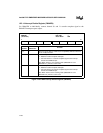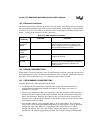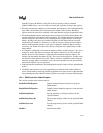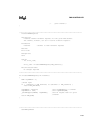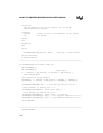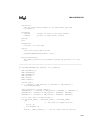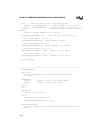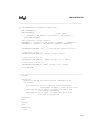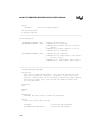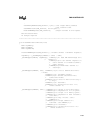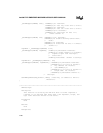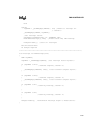
Intel386™ EX EMBEDDED MICROPROCESSOR USER’S MANUAL
12-56
#else /*Else in compact, large, or huge memory model*/
wSegment = _FP_SEG(ptMemory); /*...grab the segment from the pointer*/
wOffset = _FP_OFF(ptMemory); /*...and the offset from the pointer*/
#endif /*Assuming real mode, compute our physical
address*/
lAddress = ((DWORD) wSegment << 4) + wOffset;
_SetEXRegByte(DMACLRBP, 0x0); /*Clear the byte pointer flip-flop */
/* Write target address, bits 0-7 */
_SetEXRegByte(addrDMATar0_1, (BYTE) (lAddress & 0xFF));
/* Write target address, bits 8-15 */
_SetEXRegByte(addrDMATar0_1, (BYTE) ((lAddress >> 8) & 0xFF));
/* Write target address, bits 16-23 */
_SetEXRegByte(addrDMATar2, (BYTE) ((lAddress >> 16) & 0xFF));
/* Write target address, bits 24-25 */
_SetEXRegByte(addrDMATar3, (BYTE) ((lAddress >> 24) & 0x03));
return ERR_NONE;
}
/*****************************************************************************
SetDMAXferCount:
Description:
Sets the target memory device for the DMA channel specified
by nChannel
PARAMETERS:
nChannel --channel for which to set target address
ptMemory --pointer to target memory location
Returns:
None
Assumptions:
Processor is in real mode.
Syntax:
static char lpsz[]=”Hello World”;
SetDMATargMemAddr(DMA_Channel0, lpsz);
Real/Protected Mode:
The address calculation from ptMemory assumes the processor is in real
mode.



